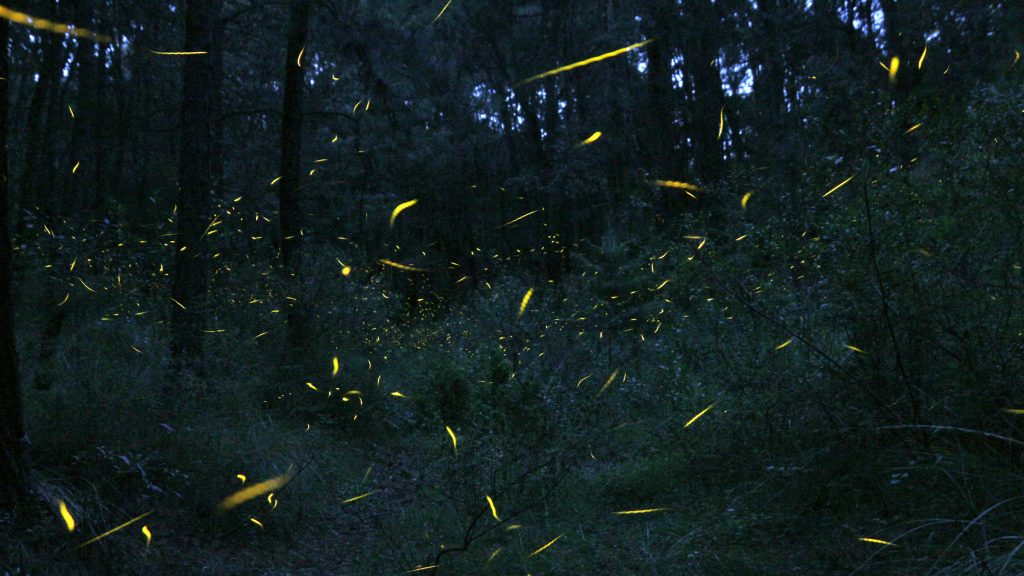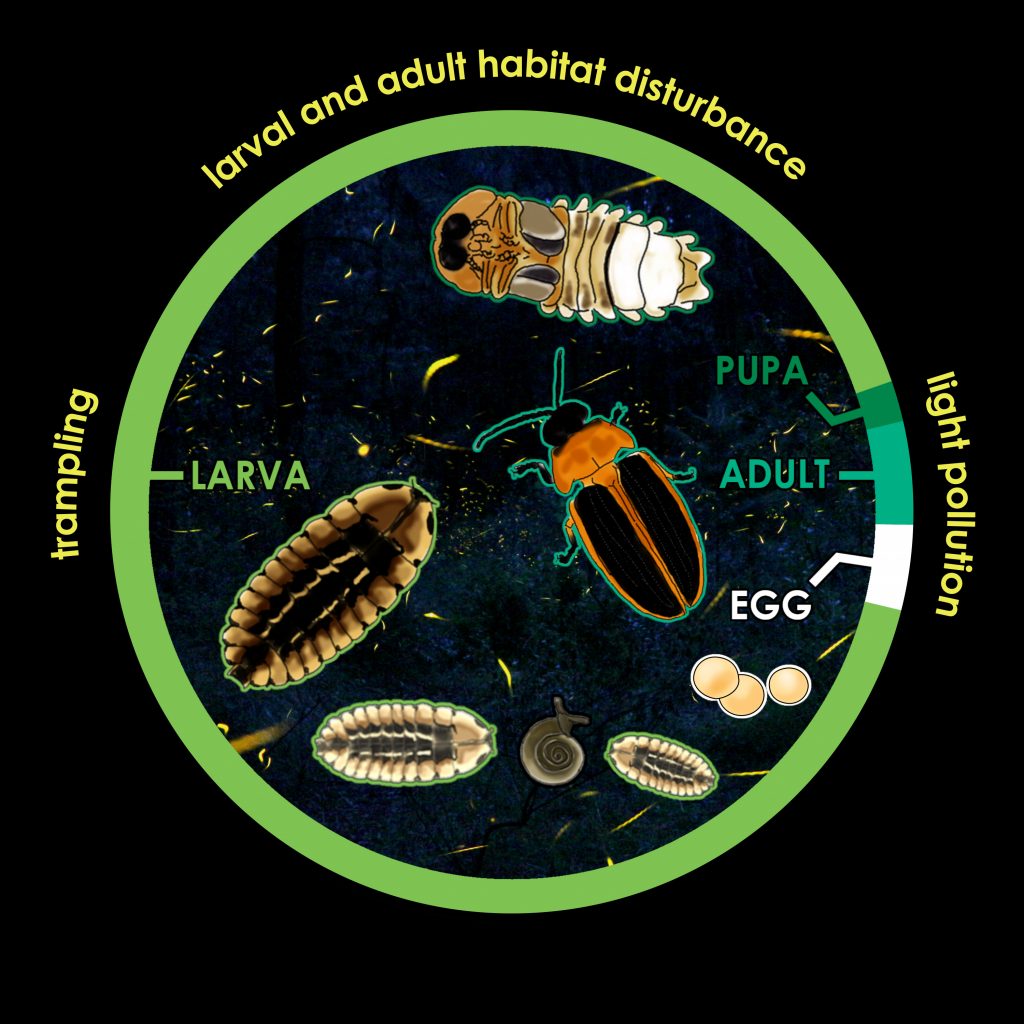Firefly tourism takes flight, sparking wonder and concern
MEDFORD/SOMERVILLE, MASSACHUSETTS (March 11, 2021) – Researchers from the IUCN Species Survival Commission (SSC) Firefly Specialist Group published the first comprehensive review of major firefly tourism sites worldwide, examining how tourism activities impacts firefly populations and mitigating factors to protect vulnerable firefly species
Dr Wan Faridah Akmal Jusoh (Research Fellow at the Lee Kong Chian Natural History Museum, National University of Singapore) is a contributing member of the Firefly Specialist Group and the Fireflyers International Network (FIN), which works to identify key threats and conservation issues facing fireflies in different geographic regions, and advocates for the most threatened species at national and global levels.
Firefly beetles rank among the world’s most charismatic creatures, with luminous courtship displays that have now turned them into a popular attraction for wildlife tourists. In a new review, Tufts University biologist Dr Sara Lewis and her colleagues reveal that an estimated 1 million people travel each year to witness bioluminescent performances starring some two dozen different firefly species around the world.
Working as part of the International Union for the Conservation of Nature’s (IUCN) Firefly Specialist Group, the authors provide the first comprehensive review to illuminate this growing global phenomenon. Especially popular are displays created by several kinds of synchronous fireflies found in Southeast Asia and North America, where hundreds or thousands of firefly males captivate females – and tourists, too – by all flashing their lights together in unison. “With such mesmerizing lights, the firefly display trees make tourists fall in love at first sight,” Thai researcher Dr Anchana Thancharoen remarked.

A Fire Going Out
Writing in Conservation Science and Practice, the authors point out that this unique, insect-based tourism can bring economic, social, and psychological benefits to local communities and tourists alike. However, without adequate protections in place, this burgeoning recreational activity threatens to extinguish some local firefly populations.
In recent years, the number of tourists has skyrocketed at several sites in Mexico, India, Taiwan, Malaysia, Thailand, and the United States. “In Mexico, the rapid growth of firefly tourism over the past decade is thrilling but also alarming,” says co-author Tania López-Palafox. “We’re glad people can experience one of the world’s greatest natural wonders. But we also want to make sure the fireflies are still around for future generations to enjoy.”

Aimed at site managers, tour guides, and tourists, the report highlights the need to recognize ecological requirements across all firefly life stages. To promote the breeding success of firefly adults, sites should minimize light pollution: bright lights from buildings, vehicles, flashlights, and even cell phones can disrupt firefly courtship rituals.

Protection of nearby habitats also plays an essential role. Fireflies spend most of their life cycle in a juvenile, larval stage. These juveniles require several months or even years to develop into their adult form and, depending on the species, spend this time living belowground, in leaf litter or sometimes underwater. The authors describe former firefly sites along mangrove rivers where commercial development and excessive motorboat traffic have degraded the riverbank habitat essential for supporting firefly larvae.
At other sites, too many tourists inadvertently trampling females and degrading larval habitats threaten firefly populations. “People get so caught up in watching the show, they don’t realize that by walking around they might be tromping on the next firefly generation” explains co-author Lynn Faust.
Lighting the Way Forward
Whether managed by governments or run by commercial enterprises, well-managed tourism should educate tourists to become allies in protecting firefly populations. Fireflies can also be a gateway insect to get tourists interested in conserving many other insects, which are essential building blocks for healthy ecosystems.
By providing practical guidelines for sustainable tourism, the authors remain optimistic that this activity can promote economic and social well-being within local communities while also protecting firefly populations. As co-author Dr Wan Faridah Akmal Jusoh puts it, “local communities are the guardians of fireflies, and their stories and local knowledge carry the power to help protect them.”
Read the full paper here in the journal Conservation Science and Practice: Firefly Tourism: Advancing a Global Phenomenon Toward a Brighter Future

